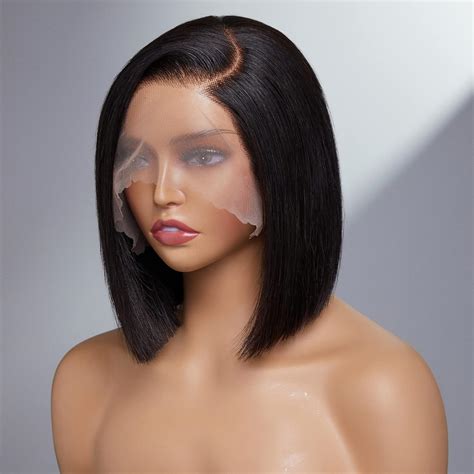Introduction
Wigs and closures offer a myriad of styling possibilities, allowing individuals to enhance their appearance and express their unique style. This comprehensive guide delves into the world of wigs and closures, exploring their types, benefits, installation techniques, and maintenance tips.

Types of Wigs
Lace Front Wigs (LFWs)
- Pain Points: Limited hair parting flexibility
- Motivations: Natural-looking hairline, versatility in styling
Full Lace Wigs (FLWs)
- Pain Points: Higher cost, requires more maintenance
- Motivations: Realistic appearance, customizable hair placement
360 Lace Wigs
- Pain Points: Can be bulky, less breathable than LFWs
- Motivations: Versatile styling, 360-degree coverage
Machine-Made Wigs
- Pain Points: Less durable than lace wigs, less breathable
- Motivations: Affordable, easy to install
Types of Closures
Frontal Closures
- Pain Points: Requires precision installation, can be noticeable
- Motivations: Blends naturally with existing hair, creates a realistic hairline
Lace Closures
- Pain Points: Can damage hair if not installed properly
- Motivations: Versatility, allows for multiple styling options
Benefits of Wigs and Closures
- Hair Protection: Shields natural hair from environmental damage and heat styling.
- Versatile Styling: Enables limitless styling possibilities, from bold colors to experimental cuts.
- Confidence Booster: Can enhance appearance and increase self-esteem.
- Medical Necessity: Used as a solution for hair loss due to medical conditions or treatments.
Installation Techniques
Wigs
1. Measure Head Circumference: Use a measuring tape to determine the correct wig size.
2. Prepare Natural Hair: Braid or cornrow hair into flat rows to create a smooth base.
3. Secure Wig: Place the wig on the head and secure it using wig glue, clips, or an adjustable band.
Closures
1. Cut Hair Around Lace: Trim hair around the edges of the lace closure to blend it seamlessly.
2. Adhere Closure: Use wig glue or lace adhesive to attach the closure to the scalp.
3. Blend Hair: Use a brush or comb to blend the closure hair with the natural hair.
Maintenance Tips
- Wash Regularly: Wash wigs and closures every 2-4 weeks using lukewarm water and sulfate-free shampoo.
- Detangle Hair: Brush or comb hair gently to remove tangles and prevent breakage.
- Condition Hair: Apply conditioner to wigs and closures after washing to keep them hydrated.
- Air Dry: Allow wigs and closures to air dry to avoid heat damage.
- Store Properly: Store wigs and closures in a cool, dry place when not in use.
Cost and Investment
The cost of wigs and closures varies depending on the type, material, and quality. Here is an approximate breakdown:
| Wig Type | Closure Type | Cost Range |
|---|---|---|
| Lace Front Wigs | Frontal Closure | $100-$400 |
| Full Lace Wigs | Full Closure | $200-$600 |
| 360 Lace Wigs | Lace Closure | $150-$300 |
| Machine-Made Wigs | N/A | $50-$200 |
Applications Beyond the Norm
Apart from the traditional use in fashion and hair loss solutions, wigs and closures have recently found creative applications in the film industry, cosplay, and even robotics.
Robotics: Wiggly
Wiggly is a groundbreaking robot created by researchers at the University of Berkeley that utilizes hair-like fibers to interact with humans and its environment.
Frequently Asked Questions
Q1: Can I sleep with a wig on?
A1: While it is not recommended, sleeping with a wig can be done if necessary. However, it is important to loosen the wig and wear a satin bonnet or scarf to protect it from friction.
Q2: How long do wigs last?
A2: The lifespan of a wig depends on its material, frequency of use, and maintenance. On average, lace wigs last 6-12 months, while machine-made wigs can last 2-4 months.
Q3: Can I dye my wig?
A3: Yes, synthetic wigs can be dyed using synthetic hair dye. However, human hair wigs should be dyed by a professional to avoid damage.
Q4: Can I bleach my wig?
A4: Only 100% human hair wigs can be bleached. Bleaching synthetic wigs will damage them beyond repair.
Q5: How do I know if a wig fits me?
A5: Measure your head circumference and compare it to the wig’s measurements. The wig should fit snugly without being too loose or tight.
Q6: Can I wear wigs if I have sensitive skin?
A6: Yes, there are wigs made from hypoallergenic materials that are gentle on sensitive skin.
Q7: How do I style wigs with closures?
A7: Closures allow for a variety of styling options. You can braid, curl, or straighten the hair for a customized look.
Q8: Can I wear wigs for swimming?
A8: It is not recommended to wear wigs for swimming, as chlorine and salt water can damage them.
Conclusion
Wigs and closures offer a transformative hair experience, providing limitless styling possibilities, confidence boosts, and practical solutions. Understanding the different types, installation techniques, maintenance tips, and innovative applications will empower you to make informed choices and maximize the benefits of these versatile hair alternatives.
